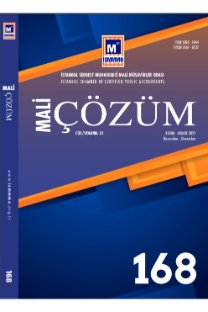FİNANSAL RAPORLAMAYA İLİŞKİN KAVRAMSAL ÇERÇEVE VE KAVRAMSAL ÇERÇEVE PROJESİ
Kavramsal çerçeve, işletme dışındaki kullanıcılar için hazırlanan ve sunulan finansal raporlarda uyulacak temel usul ve esasları belirlemektedir. Standart niteli- ğinde olmayan bu çerçeve, yayımlanmış ve yayımlanacak olan standartlar arasın- da tutarlılık sağlamaya yönelik temel ilkeleri kapsayan bir rehber niteliğindedir. Herhangi bir ekonomik aktivite ile ilgili olarak yayımlanmış bir muhasebe stan- dardının bulunmadığı durumlarda, Kavramsal Çerçeve muhasebe politikası geliş- tirilmesine ve soruna çözüm üretilmesine rehberlik eder. Dolayısıyla, muhasebe standartlarının çerçevesini çizmekte ve sınırlarını belirlemekte bir anayasa rolü üstlenmektedir. Kavramsal Çerçevede temel olarak finansal raporlamanın amacın- dan hareketle muhasebe bilgisinin niteliksel özellikleri, finansal tabloların temel unsurları, bu unsurların nasıl ve ne zaman tanınacağı, ölçümleneceği ve rapor edi- leceği hususları belirli varsayım ve prensipler doğrultusunda ortaya konmaktadır. Bu çalışmanın amacı, FASB 2 ve IASB 3 kavramsal çerçevelerini karşılaştırmalı olarak sunmak, farklılıkları tespit etmek , FASB ve IASB tarafından yürütülen kavramsal çerçeve projesinin amaçlarını değerlendirmektir. Çalışmada, kavram- sal çerçeve bileşenleri karşılaştırmalı olarak sunulduktan sonra kavramsal çerçeve projesinin aşamalarına kısaca yer verilmektedir.
CONCEPTUAL FRAMEWORK FOR FINANCIAL REPORTING AND CONCEPTUAL FRAMEWORK PROJECT
The conceptual framework sets out the basic principles and procedures to be followed in the financial reports prepared and presented for external users. This framework, which is not a standard, is guide covering the basic principles in consistency between standards. If there is no published accounting standard for any economic activity, the conceptual framwork guidess the development of the accounting policy and the solution of the problem. Therefore, it assu- mes a constitutional role in drawing the frame of accounting standards and de- termining its boundaries. In the first level, the conceptual framework is based mainly on the objective of financial reporting. In the following, the qualitative characteristic of accounting information, the basic elements of finansal state- ments, how and when these elements recognized, measured and reported are put forward in the direction of assumptions and principles. The purpose of this study is to present the IASB’s and FASB’s conceptual framework comparati- vely, to identify the differences and to evaluate objectives of conceptual fra- mework project. In the study, the phases of the project will be briefly presen- ted after the conceptual framework components are presented comparatively.
___
- Alexander, David ve Nobes, Christopher (2010) Financial Accounting – An International Introduction. 4.ed. London: Prentice Hall
- Alfredson, Leo, ve ötekiler (2007) Applying international financial re- porting standards. Australia: Wiley Yayınları.
- Ankarath, Nandakumar, Mehta, K.alpesh J., Ghosh, P.T., ve Alkafaji, Yass, A. (2010). Understanding IFRS Fundamentals. Hoboken, New Jersey: Jo- hnı Wiley & Sons, Inc.
- Boerner, Hank (2007) “The Way Forward: The Global Auditing Big Six And Their Vision Of Financial Reporting” Corporate Finance Review, 11,5, (Mart Nisan 2007) : 40.
- Bullen, Halsey G. ve Crook, Kimberley (2005). “Revisiting the Concepts: A New Conceptual Framework Project” Finansal Muhasebe Standartları Ku- rulu (FASB). Mayıs (2005). 17 Haziran 2017 tarihinde
- h t t p : / / w w w. f a s b . o r g / c s / B l o b S e r v e r ? b l o b k e y = i d & b l o b w h e - re=1175818825710&blobheader=application%2Fpdf&blobcol=urldata&blo- btable=MungoBlobs adresinden erişildi.
- Çiftçi, Y. ve Erserim, A. (2010) “Muhasebe Standartlarında Uluslar arası Uyumlaştırma Çalışmaları ve Türkiye’deki Durumun İncelenmesi”, 21 Nisan 2010 tarihinde http://bandirma.balikesir.edu.tr/bildiriler adresinden erişildi.
- Durak, Gündoğan (2012). “ Uluslararası Muhasebe Standartlarının Kav- ramsal Çerçevesi” Vergi Dünyası 368 (2012): 38-45
- Kamu Gözetimi Kurumu (2011) Finansal Raporlamaya İlişkin Kav- ramsal Çerçeve. Ankara: Resmi Gazete (27828 sayılı)
- Mirza, Abbas,A., ve Ankarath, Nandakumar (2013). International Tren- ds in Financial Reporting under IFRS. Hoboken, New Jersey: John Wiley & Sons, Inc Gore, Richard ve Zimmerman, Dyan (2007). “Building the Founda- tions of Financial Reporting: The Conceptuaş Framework” Mali Müşavirler Dergisi. 22 Ekim 2017 tarihinde http://archives.cpajournal.com/2007/807/ essentials/p30.htm adresinden erişildi.
- Riahi-Belkaoui, Ahmed ve Jones, Stewart (2000) Accounting Theory. Southbank Victoria Nelson Thomson Learning, 2.
- Thomas, Andrew ve Ward, A. Marie (2012) Introduction to Financial Accounting. 7.ed. Berkshire: McGraw-Hill
- Whittington, Geoffrey (2008). “Fair Value and the IASB/FASB Conceptu- al Framework Project: An Alternative View” ABACUS, 44, 2 (2008)
- ISSN: 1303-5444
- Yayın Aralığı: Yılda 6 Sayı
- Başlangıç: 1991
- Yayıncı: İstanbul Serbest Muhasebeci Mali Müşavirler Odası
Sayıdaki Diğer Makaleler
FİNANSAL RAPORLAMAYA İLİŞKİN KAVRAMSAL ÇERÇEVE VE KAVRAMSAL ÇERÇEVE PROJESİ
TEKNOKENTLERDE GİRİŞİMCİLERE SAĞLANAN YARARLAR VERGİSEL BOYUTTA İNCELENMESİ VE BİR UYGULAMA
GÜNAY DENİZ DURSUN, Nazan AKAN
ŞEKERLİ VE TATLANDIRICILI İÇECEK VERGİSİNİ UYGULAYAN ÜLKE ÖRNEKLERİ VE TÜRKİYE DEĞERLENDİRMESİ
